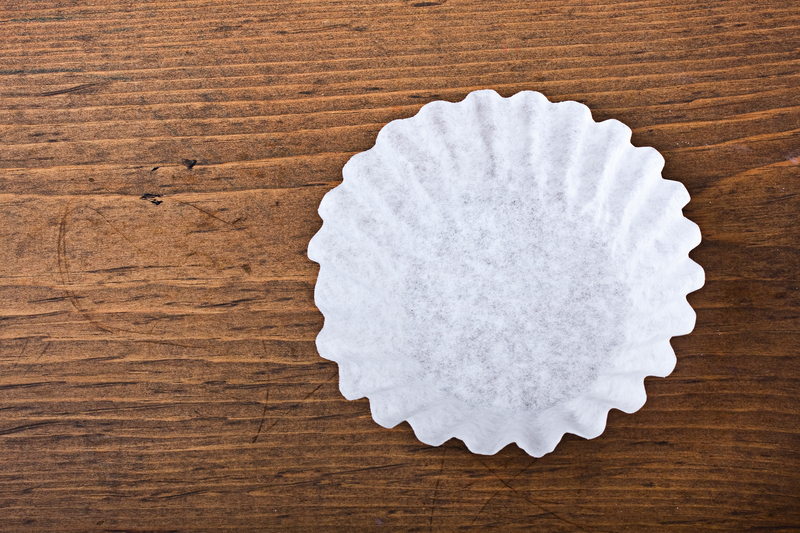Effective Ways to Eliminate Damp Odors
Posted on 22/06/2025
Effective Ways to Eliminate Damp Odors
Damp smells can be upsetting and are more than just an unpleasant odor--they can signal underlying moisture issues in your home, ranging from mild condensation to serious water leaks. Eliminating damp odors and preventing their return can improve indoor air quality, protect your belongings, and create a healthier, fresher environment for everyone. In this comprehensive guide, we'll explore the most effective ways to remove damp smells, prevent their recurrence, and ensure your living areas smell clean and welcoming at all times.
Understanding the Source of Damp Odors
Before discussing the solutions, you should understand what causes of damp odors. These unpleasant smells typically arise because of unwanted moisture that encourages the growth of mold, mildew, and bacteria. If left unresolved, the issue could affect not just comfort, but structural integrity and health. Common sources of musty or damp smells include:
- Leaking pipes or roofs
- Condensation on windows and walls
- Lack of ventilation in bathrooms, basements, and closets
- Wet clothes or carpets
- Flooded areas or water damage
To successfully remove damp odors, the underlying moisture issue must be addressed first. Once the source is eliminated, you can then focus on deodorizing and refreshing your home.

Step-by-Step Solutions to Remove Damp Odors
1. Identify and Fix Moisture Sources
The first step in any strategy to eliminate damp odors is to track down where the moisture is coming from. Some practical actions are:
- Inspect your plumbing: Check for leaking pipes, slow drips under sinks, and water stains on ceilings or walls.
- Repair roof leaks: Water infiltration from the roof can cause widespread musty odors.
- Seal windows and doors: Replace worn weather stripping and seal any gaps where moisture may enter.
- Ensure proper drainage: Clean gutters, downspouts, and make sure the soil slopes away from the foundation.
Fixing these issues is critical for achieving lasting odor removal. Sometimes, you may need professional help for thorough repairs.
2. Improve Ventilation
Lack of airflow traps humidity and allows mold to thrive. Try the following ventilation improvements to banish musty smells:
- Open windows and doors: Letting in fresh air is the simplest way to clear out trapped, stale odors.
- Install exhaust fans: Especially in bathrooms, laundry rooms, and kitchens where moisture is often high.
- Use ceiling or portable fans: To keep air moving and speed up drying of damp areas.
Proper ventilation is a key ingredient in the process of eliminating damp smells.
3. Reduce Humidity Levels
To keep indoor humidity at bay (and molds away!), consider the following:
- Use a dehumidifier: Effective for areas like basements and crawl spaces where moisture tends to linger.
- Air conditioning: AC units help reduce humidity during warm seasons.
- Houseplants: Some plants absorb moisture from the air, though you should avoid overwatering them, as overwatered plants can contribute to damp smells.
- Monitor humidity: Hygrometers are inexpensive tools that tell you when indoor humidity rises above the recommended 30-50% range.
4. Clean and Disinfect All Surfaces
Once the moisture cause is under control, a deep clean is crucial. Here's how to effectively remove musty smells from your home:
- Hard surfaces: Wipe down with a mixture of water and white vinegar, or a mild bleach solution (1 cup bleach to 1 gallon water). This kills most mold, mildew, and bacteria.
- Soft surfaces: Machine wash curtains, bedding, and other fabrics that have absorbed moisture. For carpets and upholstery, use a steam cleaner or professional service.
- Hidden areas: Don't forget closets, behind furniture, and beneath sinks--these spots often harbor lingering odors.
Tip: Always dry cleaned areas thoroughly to prevent new mold growth.
5. Use Natural Odor Absorbers
Natural remedies are effective at eliminating damp odors without harsh chemicals. Some options include:
- Baking soda: Sprinkle on carpets or in affected areas and leave overnight, then vacuum it up to absorb smells.
- Activated charcoal: Place bowls of activated charcoal around musty rooms for ongoing odor absorption.
- White vinegar: Leave bowls of vinegar out to neutralize airborne odors; it dissipates after a few hours.
- Coffee grounds: Coffee can absorb and mask mild damp smells in small spaces like closets or cars.
- Cat litter: Place an open box in the area to wick away moisture and neutralize odors.
These simple products can make a noticeable difference in your ongoing fight against mustiness.
Long-Term Strategies for Preventing Damp Smells
Once you have handled existing damp odors, you'll want to prevent musty smells from returning. Here are proactive techniques that maintain a fresh-smelling home:
1. Routine Checks and Maintenance
- Inspect periodically: Schedule regular checks of basements, attics, under sinks, and behind appliances for leaks or moisture accumulation.
- Clean gutters and downspouts: Blocked gutters can cause water to seep into your foundation and interior walls.
- Maintain seals: Weather-strip and caulk windows, doors, and any wall penetrations.
2. Use Moisture Barriers
- Install vapor barriers: Especially useful in basements and crawl spaces to prevent ground moisture from seeping in.
- Waterproof paints and sealants: Apply to basement walls and floors for extra protection.
3. Organize and Declutter
- Keep storage spaces tidy: Overstuffed closets or cluttered basements restrict airflow and trap moisture.
- Use shelving: Store items off the floor, especially in basements or garages where flooding can occur.
4. Dry Laundry Properly
- Don't leave wet clothes sitting: Transfer laundry to the dryer or hang to air-dry immediately.
- Hang laundry outside: Sunlight and fresh air naturally neutralize odors and excess moisture.
Adopting these habits is one of the most important ways to keep your home free from damp smells.
Natural Remedies to Remove Musty Smells
Some of the best techniques to eliminate damp odors naturally include the following home remedies:
Essential Oils
- Tea tree oil: Naturally antifungal; add a few drops to cleaning water or use in a diffuser.
- Lemon or eucalyptus oil: Cut through mildew odors and leave a fresh scent behind.
- Lavender oil: Calming and effective for closets, linen drawers, and small spaces.
DIY Air Freshener Sprays
- Mix 1 part white vinegar to 3 parts water, add 10 drops of your favorite essential oil. Spray liberally on musty surfaces or into the air.
- Baking soda spray: Mix 1 tablespoon baking soda with 2 cups water in a spray bottle. Shake well and mist areas prone to mustiness.
Lemon Treatment
Lemons are highly effective at neutralizing odors and have mild antibacterial properties. Use fresh lemon juice mixed with water to wipe down surfaces, or add lemon peels to bowls of vinegar left in problem areas overnight.
Sunlight and Air
- Sun-drying: Place cushions, rugs, or other fabrics outside on a sunny day. Sunlight is a natural disinfectant that helps kill odor-causing organisms.
- Cross-ventilation: Open windows on opposite sides of a room or home to promote airflow and quick drying.
Addressing Specific Areas Prone to Damp Smells
How to Eliminate Damp Odors in Basements
- Dehumidifiers: Run a dehumidifier year-round and empty it regularly.
- Seal concrete floors and walls: Use waterproofing products to block moisture ingress.
- Remove items stored on the ground: Use shelving to minimize contact with potentially damp floors.
- Check for wall cracks: Even small openings allow unwanted water and musty smells.
Effective Ways to Remove Damp Smells in Bathrooms
- Run the fan or open windows after showering.
- Wipe down wet surfaces: Dry tiles, shower curtains, and bathroom mats daily.
- Launder towels and mats frequently: Damp towels are a common source of bathroom odors.
Tips for Closets and Storage Areas
- Store only clean, dry clothes: Even slightly damp fabrics can spark a musty-smelling closet.
- Add moisture absorbers: Silica gel, charcoal bags, or even chalk can help keep small enclosed spaces dry.
- Rotate contents: Air out and reorganize periodically to ensure airflow.

When to Seek Professional Help
Sometimes, damp odors persist even after trying all available remedies. If you notice:
- Widespread water staining or visible mold patches
- Health symptoms like allergies, headaches, or respiratory issues
- Structural damage such as warping, bubbling paint, or crumbling drywall
It's time to call in a professional mold remediation, waterproofing, or plumbing expert.
Conclusion: Banish Damp Odors for Good
Eliminating musty and damp odors is achievable by tackling both the sources of moisture and the lingering smells they create. By combining immediate actions--such as proper cleaning, drying, and using natural odor absorbers--with long-term preventative measures like better ventilation, regular maintenance, and humidity control, your home can stay fresh and healthy year-round.
Remember: If you detect any persistent damp odor, don't ignore it. Prompt attention not only removes unpleasant smells but also protects your health and your investment in your home. With these effective ways to eliminate damp odors, you'll create a space that smells as welcoming as it feels.
Keywords: damp odors, eliminate damp odors, remove musty smells, how to get rid of damp, ways to get rid of damp odor, effective remedies for damp smells, banish musty house odor, mildew odor removal, musty odor solutions, natural ways to eliminate dampness.




